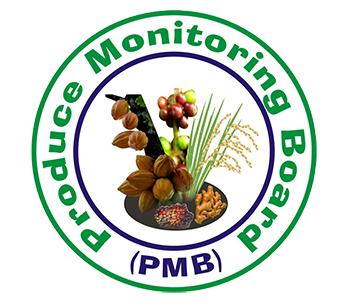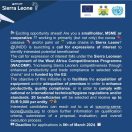The cultivation of ginger has taken longer period than one can imagine, how and when it was introduced into Sierra Leone is not known.
Ginger may not only be important to add flavor to foods and beverages, but as medicines, disinfectants, incenses, stimulants and even as aphrodisiac agents. Numerous studies have been conducted on the medicinal benefits of ginger for over 100 health conditions which indicates the following: Settles stomach issues, Reduces motion sickness, relieves arthritis, Soothes migraines, Kills cancer, Treatment of respiratory diseases e.g Asthma, Reduces cough cold and Slows DNA damage etc.
In Sierra Leone, ginger is grown in different parts, but the areas of highest density are Moyamba and Bo Districts in the Southern Province and Kambia in the North.
Sizeable plantings are found in Kenema, Kailahun, Pujehun, Tonkolili and other Districts.
Two varieties grown in Sierra Leone, local and Chinese variety. Each has district morphological characteristics. The local cultivars have been under production since time immemorial.
Improved varieties have been introduced in Sierra Leone just after the war and have been disseminated through informal seed system especially in Kambia and Moyamba districts.
Ginger which has been declared to be of “standard quality” shall be deemed to be fit for export.
Ginger shall be thoroughly dry, and plump, peel removed from both sides of the ‘hand’ and is sufficiently free from adult insects to ensure its commercial soundness and entirely free from insect larvae, mildew, sand and other extraneous matter. Such ginger is declared to be of “standard quality”.
GRADE A
The ginger shall have been completely peeled and shall be thoroughly clean and dry and shall be plump, bold and pale buff in appearance, free from small broken pieces and free from adult insects, insect larvae, mildew, peelings, sand and other extraneous matter.
GRADE B
All other ginger of “Standard quality”. Having completed the grading as prescribed.
Examine/Inspector shall cause it forth with to be bagged in sound bags and these shall be sewn up without lugs by means of lock stitches. Placed not more than one inch (1”) apart, and shall be sealed.
Ginger bag for export should be marked to indicate relevant product and legal information e.g. country of origin and import, and any other information (example, bar code, producer code, etc.) for easy traceability of its origins.
SOME QUALITY ASSURANCE OF DRIED GINGER
Dried ginger is assessed by the appearance (that is, colour, lack of mould or aflatoxin and the aroma and flaour. These are caused by a combination of pre and post-harvest factors:
- The cultiva of ginger used determines the flavor, aroma, pungency and levels of essential oil and fibre.
- The stage of maturity of the rhizome at harvest determines its suitability for end use.
- After harvest, the rhizomes should be washed to ensure a pale colour. Wet rhizomes should not be allowed to lie in heaps for too long as they will begin to ferment.
- Care should be taken when removing the outer cork skin as it minimize the fiber content. Thick peeling reduces volatile oil content contained rear rhizome surface.
- Dry to achieve a moisture content of 7-12%, ensuring mould growth during drying is prevented.
After harvest, cleaning, peeling and drying should not be delayed to prevent the growth of bacteria, mould and fermentation.



